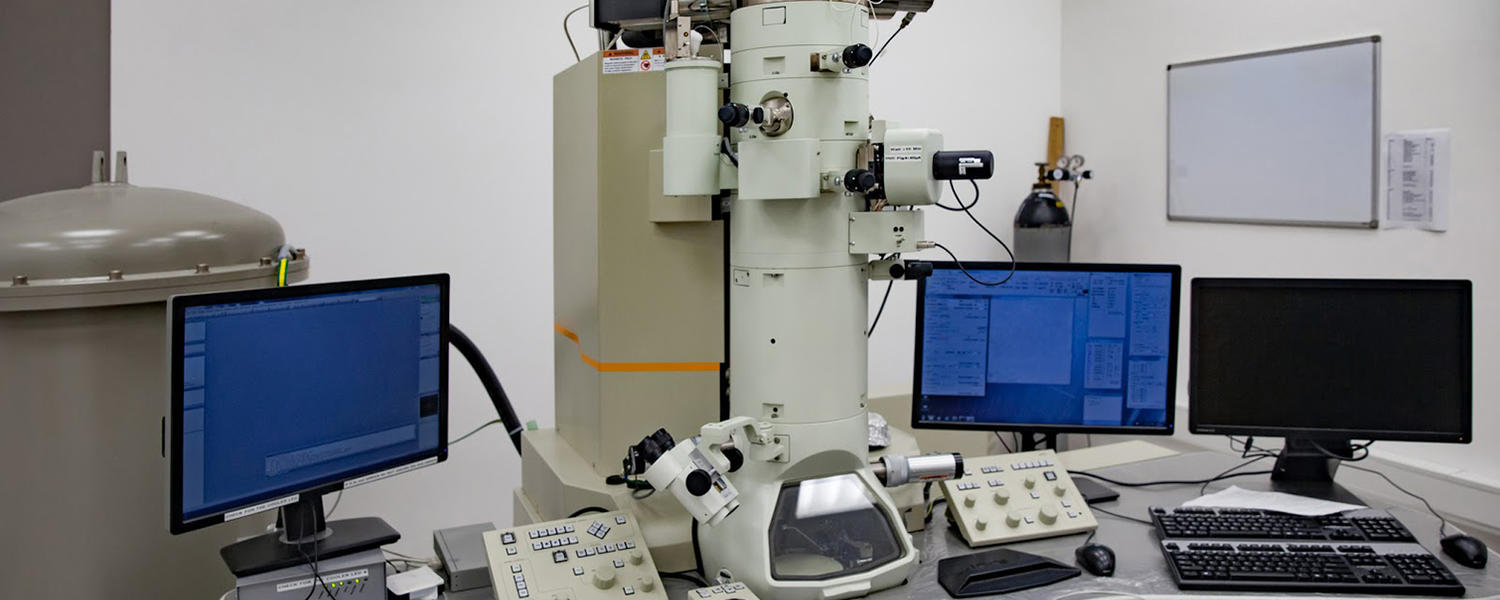
Equipment and services
The MIF acts as a shared resource facility containing state-of-the-art imaging instruments and image analysis software that would normally be too expensive for individual departments to purchase and operate. Below, you’ll find a list of the imaging equipment we offer.
The use of equipment is based on a fee-for-service model. Users can take advantage of full-service support (all work carried out by our staff) or may be trained to use the equipment themselves. Our professional staff can also offer the following services:
- Comprehensive hands-on user training for our equipment and software
- Consultation on experimental design
- Assistance with identification of suitable imaging tools and techniques
- Access to software for microscopy image processing and analysis
- Instrumentation monitoring and quality control
To inquire about use of our equipment or to request our services, please contact us.
Our equipment:
Tecnai F20: 200 Kv Transmission Electron Microscope
The F20 is mainly used for Electron Tomography on biological and material sciences samples and for in-depth analysis of structure and composition of material sciences samples. Additionally, it can also be used for conventional TEM images of thick samples (around 250 nm).
Features:
- Electron tomography providing 3D tomographic reconstructions of biological or material sciences samples. This allows full access to the 3D organisation of structures in the low nanometer range.
- Certain thin biological samples can be quick frozen and imaged at cryogenic conditions (-180ºC) to preserve and image the most close-to-nature state.
- Atomic resolution on crystalline samples. Further structural analysis is possible by Selected Area Electron Diffraction (SAED) giving access to the d-spacing of the samples.
- Beam sensitive samples, film negatives can be exposed with the electron beam resulting in a very high resolution at a very low beam exposure.
- Realistically achievable resolution: 1 nm (standard imaging) / 0.1 nm (for crystals) / 0.05 nm (SAED)
Hitachi H7650: 120 Kv Transmission electron Microscope
The H-7650 is widely used for thin sections (60-70 nm) of all kinds of plastic embedded biological samples as well as thin material sciences samples to answer all kinds of standard microscopical questions.
Features:
- Designed for high sample throughput (especially relevant for biological samples)
- The H-7650 is fully digital for ease of use
- 16 Mega Pixel camera for large field of view
- The software allows to take a mosaic of adjacent images and automatically combine them to one high-resolution image at an exceptionally large field of view
- Realistically achievable resolution: 4-6 nm
SEM XL30: 30 kV Scanning Electron Microscope (SEM)
30 kV Scanning Electron Microscope (SEM) able to also operate in ESEM (environmental) mode.
The XL30 is able to work with wide range of samples from Mechanical, Electrical, and Chemical Engineering departments, as well as from the departments Geology and Chemistry. Please note, magnetic samples cannot be used.
Features:
- Secondary electron detector SE as standard detector
- Backscattered Electron detector (BSE) is very sensitive to the distribution of heavy elements
- Energy Dispersive X-ray spectroscopy (EDX) for elemental analysis
- Environmental (ESEM) mode to permit the direct imaging of uncoated non-conducting samples such as plastics or wet biological samples
- High sample throughput
- Standard Definition imaging mode (1.3 Mega Pixels) and Extra High Definition mode (11.6 Mega Pixels) available
- Realistically achievable resolution: approximately 10 nm (dependant on sample)
AFM Bruker Nano Wizard IV:
Atomic Force Microscope based on using a probe (commonly referred to as a cantilever) to scan over the surface of a sample The image obtained is a direct output of the local interaction of the probe with the sample.
Features:
- Fast Scanning of samples
- Different sample properties are measured by the probe including topography, electrostatic attractions, repulsion, magnetic forces at work. Currently there is no other microscopy technique capable of such imaging.
- High resolution imaging - Topography measured by the AFM results in an image of subnanometer range. In theory, the structure of a single molecule can be imaged with this method.
- Quantitative Imaging
- Force Spectroscopy on biological samples - cell to cell or protein to protein adhesion can also be measured with this machine
